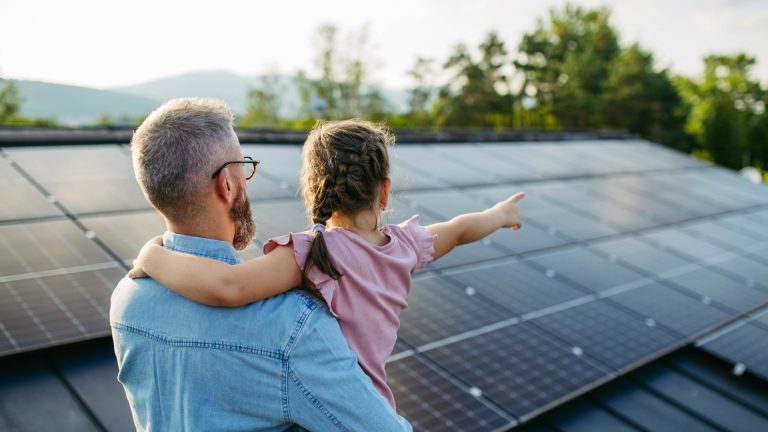This blog was written by Milja Keskinen during her work placement with the GEMINOA project. Milja is currently completing her MSc in Economics and Policy of Energy and Climate Change at the University of Strathclyde.
Renewable electricity generation has been a major driver of Scotland’s decarbonisation success.
Much of the reduction in CO₂ emissions so far has come from renewable technologies like offshore and onshore wind, which feed electricity into the GB grid. This trend isn’t limited to Scotland as a whole – it’s also reflected at the city level. Between 2005 and 2022, 46% of Glasgow’s CO₂ emissions reductions were thanks to this national transition. See our recent report here for more details on how Glasgow’s emissions have changed since 2005. With Glasgow’s 2030 net-zero target fast approaching, the City Council is now exploring local opportunities to build on the success of energy decarbonisation – aiming to cut both its own direct emissions and the area-wide emissions covered by the target.
Glasgow City Council’s solar ambitions
In 2023 Glasgow City Council initiated a phased installation program to increase solar photovoltaic (PV) generation across council estates. So far, 33 sites are up and running with the solar initiative, including a range of primary and secondary schools where rooftop solar panels have been installed. Building on this progress, Phase 1 of the project aims to add a further 1,700 solar panels across selected properties – including prominent sites like Kelvin Hall. The plans cover a mix of smaller schools and more ambitious venues, such as the Emirates Arena on London Road.
The solar deployment plan runs alongside Glasgow City Council’s broader strategy to support community-based energy initiatives. The 2024 Community Renewable Energy Framework aims to empower local groups and individuals to lead renewable energy projects on pre-identified sites, with a particular focus on council-owned vacant and derelict land. These initiatives align with Scotland’s national target of installing 2 GW of community and locally owned energy capacity by 2030.
Glasgow City Council hope that the increase in solar PV installations can lead to emissions reductions while also cutting energy bills for council-owned buildings – with the added potential for exporting surplus electricity back to the grid.
Impact on emissions
Emissions from electricity consumption are calculated by combining statistics on metered electricity use with an emissions factor, which reflects the proportion of renewables in the GB generation mix. This method allocates Glasgow its share of emissions based on electricity consumption rather than production, something done to prevent local authorities that generate electricity from having an outsized impact on emissions estimates.
Operational solar installations on Glasgow City Council sites will generate electricity that can be used directly, reducing the need for metered electricity. Any decrease in metered consumption will result in a corresponding drop in calculated electricity emissions. However, for absolute emissions reductions to be achieved, local renewable generation must be paired with stable or declining overall electricity consumption. Otherwise, the benefits of solar generation would only be relative, and total emissions could still rise.
Domestic solar expansion
Beyond the Council’s own efforts, official DESNZ statistics show that domestic solar PV capacity across Glasgow’s six parliamentary constituencies has reached 12.1 MW, with over 5,000 installations.
Chart 1: Solar PV installed capacity by Glasgow parliamentary constituency
Source: Glasgow Data Catalogue 2025
The latest available data from December 2024 show that Glasgow East has 1,265 installations – the highest in the city and double the number seen in Glasgow West.
These installations are recorded for domestic properties through the Microgeneration Certification Scheme or through OFGEM’s Central Feed in Tariff Register and thus do not include solar arrays installed on council owned properties, or industrial installations. Although not providing a complete picture, these data contribute to our understanding of Glasgow’s transition towards a more diverse energy infrastructure.
For more information on the different types of data available for Glasgow, check out our recent publication: Glasgow Data Catalogue 2025. This catalogue was produced as a part of the GEMINOA (Glasgow Environmental Monitoring of Indoor and Outdoor Air) project.
Authors

Milja Keskinen
Milja is a Knowledge Exchange (KE) Assistant at the FAI as part of her MSc in Economics and Policy of Energy and Climate Change at the University of Strathclyde.
Jack is an associate economist at the Fraser of Allander Institute.


